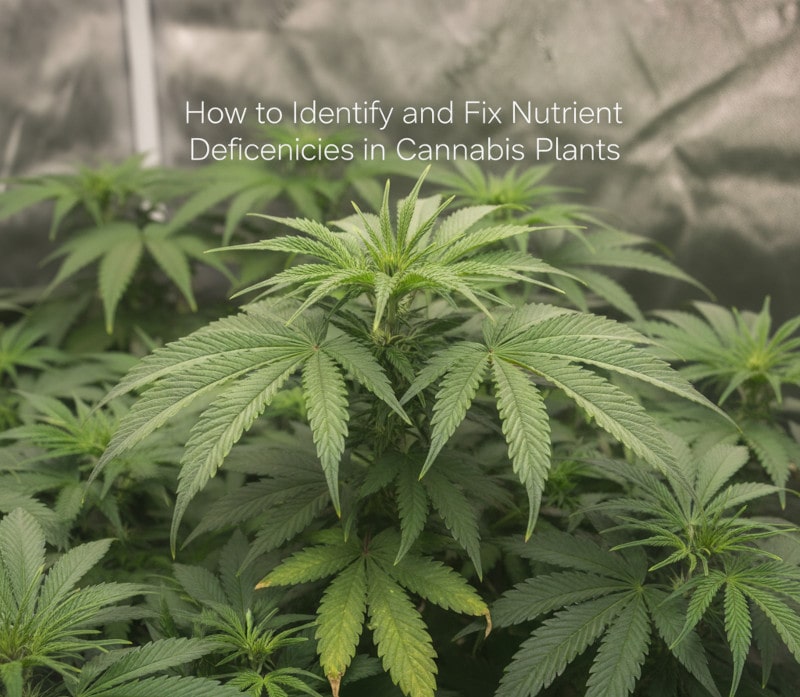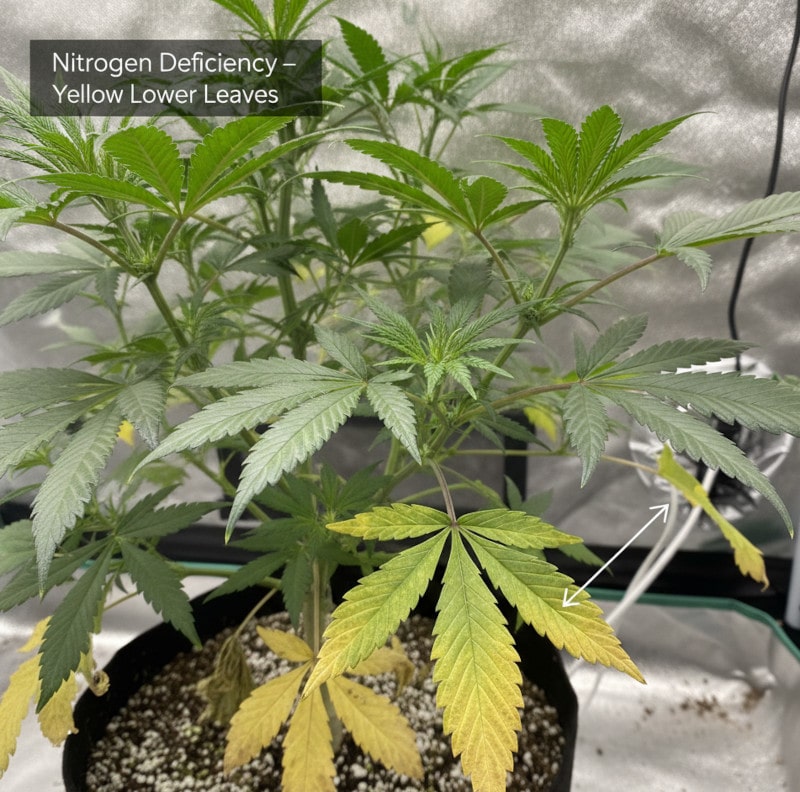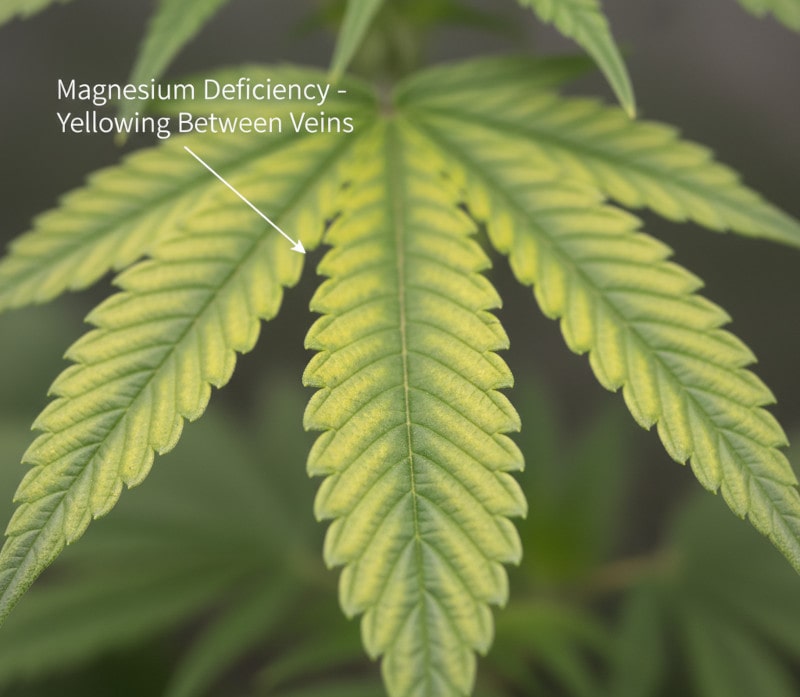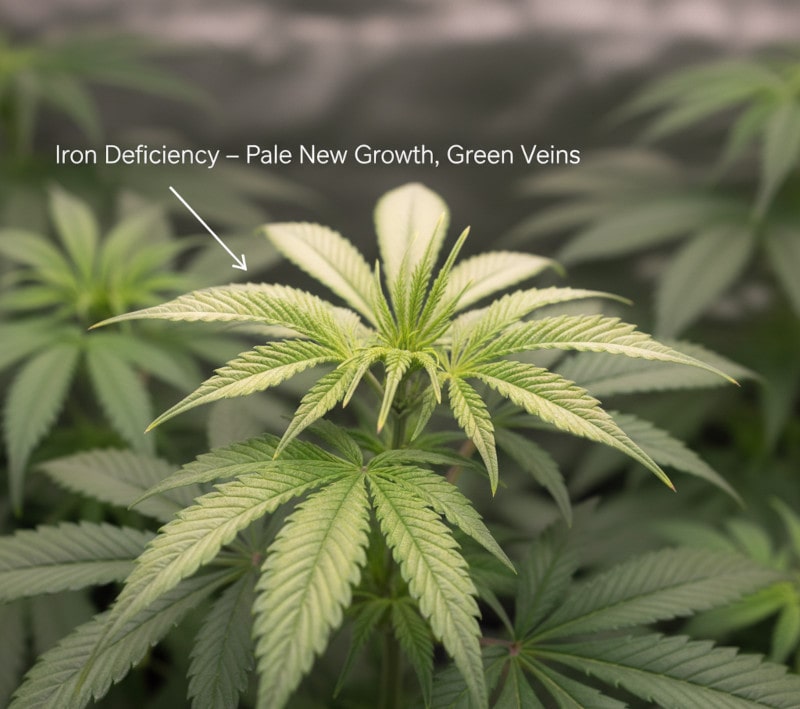Identify Nutrient Deficiencies
How to Identify and Fix Nutrient Deficiencies in Cannabis Plants
Updated: September 2025 | Nutrient deficiencies in cannabis plants
Author: Cannapot Grow Team | Reading time: approximately seven minutes

Growing cannabis can be rewarding, but sometimes it makes you scratch your head. You might water regularly, keep the light schedule right, and still see your plants act strange — yellow leaves, slow growth, weird colors. Most of the time, that means your plant is missing something it needs. A nutrient, usually.
Once you learn how to spot those signs, it gets easier. Think of it like listening to your plant. It does not talk, but it shows you what is wrong if you look close enough. Let us walk through the common deficiencies and how to fix them without overcomplicating things.
Why Do Nutrient Deficiencies Happen?
Cannabis, like any living thing, needs food — in this case, nutrients.
The main ones are nitrogen, phosphorus, and potassium. Then there are smaller ones like magnesium, calcium, iron, and a few others that still matter a lot. If one of them is missing or blocked, the plant starts to struggle.
Usually, nutrient problems come from one of these:
-
The pH is off. If it’s too high or too low, the roots cannot pull in what they need.
-
Overfeeding or underfeeding. Giving too much of one thing can block the others.
-
Environmental stress — cold nights, dry air, or just too much moisture.
-
Root issues. Damaged or tight roots can’t absorb properly, even if the nutrients are there.
Sometimes, you’ll see multiple issues at once. It can look messy, but most of it comes down to the basics — what the plant eats and how it takes it in.
The Most Common Nutrient Deficiencies
1. Nitrogen Deficiency

You can usually spot this one early. The lower leaves start to fade to yellow. The rest of the plant might still look okay for a bit, but you’ll notice slower growth and thinner stems. The whole thing feels tired.
Why it happens:
The plant simply isn’t getting enough nitrogen. Maybe the soil is old, or the pH is too high. Sometimes people add too much phosphorus or potassium, which stops nitrogen from moving through the roots.
How to fix it:
Use a mild fertilizer that’s a little heavier on nitrogen or mix in some compost. Nothing fancy — just steady feeding.
Also, test your pH. Keep it between six and seven if you are in soil, or a bit lower for hydro systems.
If you fix the pH and feed lightly, you’ll see new green growth in a week or two.
2. Phosphorus Deficiency

Phosphorus problems show up in strange ways. The leaves may turn dark green at first, then purple or reddish. The stems might look a bit tinted too. Growth slows, and flowering plants will not form buds properly.
Why it happens:
Cold soil is one of the biggest reasons. Roots slow down when the temperature drops, and phosphorus just sits there unused. Overwatering can do the same. And again, wrong pH makes it worse.
How to fix it:
Add a gentle phosphorus supplement — bone meal or any bloom formula will do.
Keep the room warm enough, around twenty degrees Celsius, give or take.
And again, check the pH. Somewhere around six to seven lets phosphorus move freely through the roots.
3. Potassium Deficiency
 This one can be sneaky. The tips of the leaves start to brown, then the edges crisp up. The leaves may curl down a little. You might think it’s light burn, but it is not. The plant looks weak even if you water it right.
This one can be sneaky. The tips of the leaves start to brown, then the edges crisp up. The leaves may curl down a little. You might think it’s light burn, but it is not. The plant looks weak even if you water it right.
Why it happens:
Potassium doesn’t always disappear. It gets locked away when the soil is too wet or too compact. High humidity can also mess with absorption. Sometimes, it’s just a pH issue again.
How to fix it:
You can feed the plant something natural like kelp meal, or even mix dried banana peel into your soil. Both help with potassium.
But before adding anything, make sure your soil drains well. Too much water keeps air out, and that’s when roots stop working.
If you are adjusting pH, aim for six to seven. It does not have to be exact. Plants like a bit of fluctuation; it keeps nutrients flowing.
Once you fix the environment, new leaves usually grow healthy again, though old ones may stay damaged.
4. Magnesium Deficiency

Magnesium problems can be tricky. The first thing you’ll notice is yellowing between the veins on the older leaves. The veins themselves stay green for a while, which makes the yellow stand out more. Eventually, brown spots appear, and the leaves might curl or fall off.
Why it happens:
It’s usually from a pH that’s too low, or because there’s too much calcium or potassium already in the soil. That combination keeps magnesium from moving around.
How to fix it:
Add a little Epsom salt. It’s cheap, easy, and works fast. You can mix it with water and feed the roots or spray it directly on the leaves.
Just do not overdo it. A tablespoon per gallon is usually plenty.
After a week, you’ll notice the new leaves come in green again.
5. Iron Deficiency

Iron issues are similar to magnesium ones, but they show up on the newest leaves first. The new growth turns pale or yellow, while the veins stay dark green. The plant looks washed out.
Why it happens:
Too high of a pH is the main reason. When the pH goes above seven, iron becomes unavailable. Overwatering can make it worse because the roots drown and stop taking in minerals.
How to fix it:
Try a small dose of chelated iron or a foliar spray. Lower your pH slightly — around five and a half to six and a half is fine for most grows.
Once corrected, the next few sets of leaves will start looking green again. It takes time, but it works.
How to Prevent Deficiencies
Catching these problems early is great, but preventing them is better. Here are a few things that keep plants steady over the long run.
Keep pH in check
This one matters the most. Cannabis likes slightly acidic soil. Stay between six and seven. In hydro setups, go a bit lower. If you keep that balance, most nutrient issues simply never happen.
Feed evenly
You don’t need to give heavy nutrients all the time. A steady, balanced feed works better than overdoing it. If you prefer organic, compost tea or worm castings work fine. If you use bottled nutrients, follow the lighter end of the label’s instructions.
Water right
Let the soil breathe. Water only when the top inch feels dry. Drainage holes are important too — stagnant water causes more problems than people think.
Keep a stable environment
Try not to swing between cold nights and hot days. Keep humidity around forty to sixty percent. Plants stress less when things stay steady.
Watch them closely
Check your leaves often. They tell you everything before the problem gets serious. If something looks off, pause, think, and adjust slowly. Rushing fixes usually makes it worse.
Final Thoughts
Nutrient problems sound complicated, but they are just part of growing. Once you’ve seen them a few times, you’ll start recognizing the signs right away. Most plants bounce back easily once they get what they need.
At Cannapot, we’ve seen all kinds of growers deal with these same issues. Whether you are growing indoors or outside, good soil, proper feeding, and the right genetics make all the difference. Our seed selection covers everything from mellow CBD strains to energizing sativas — all strong, healthy lines that respond well to balanced care.
Keep an eye on your plants, stay patient, and remember: they are tougher than they look. A little correction and consistency go a long way.
